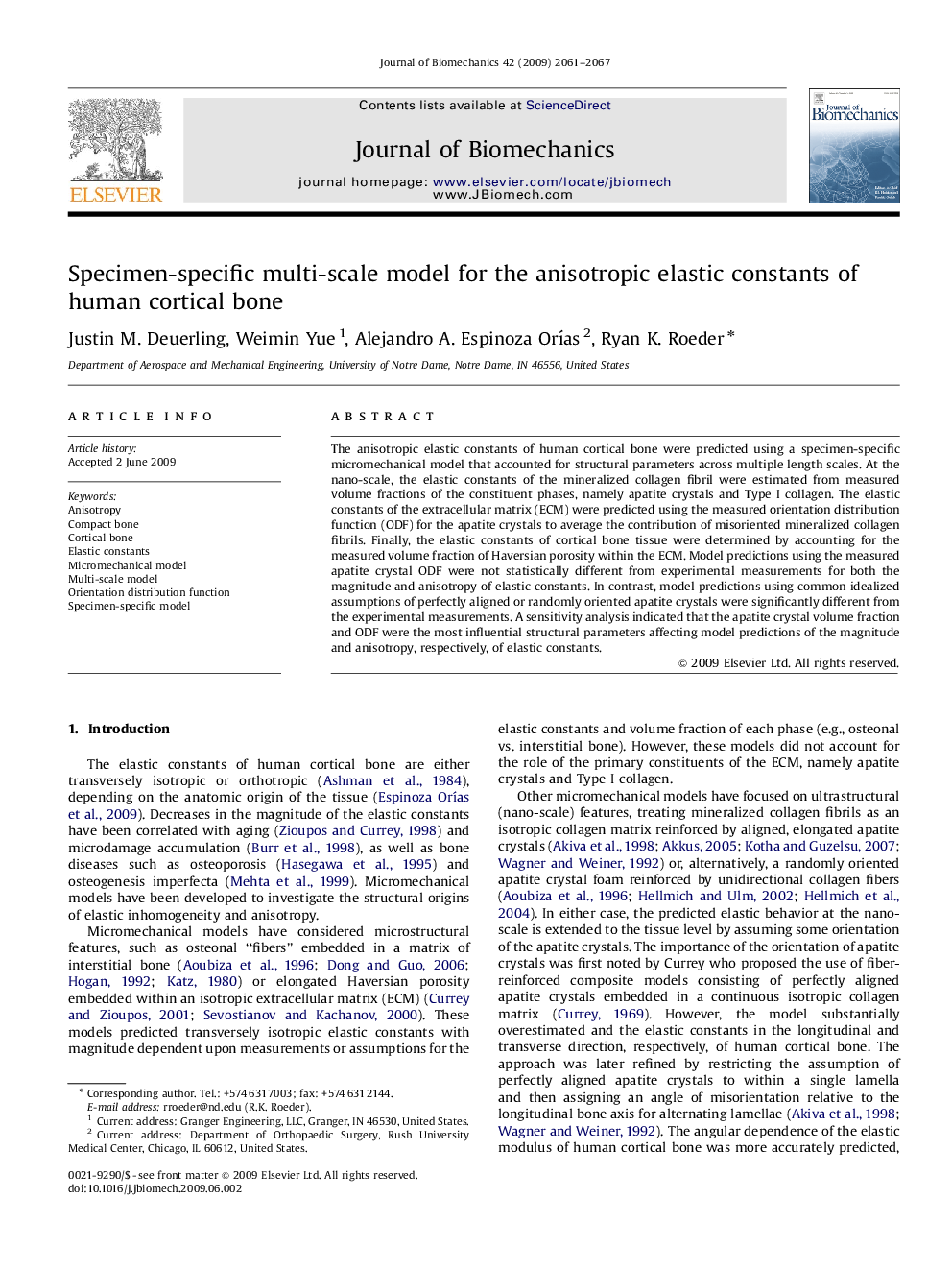| Article ID | Journal | Published Year | Pages | File Type |
|---|---|---|---|---|
| 873858 | Journal of Biomechanics | 2009 | 7 Pages |
The anisotropic elastic constants of human cortical bone were predicted using a specimen-specific micromechanical model that accounted for structural parameters across multiple length scales. At the nano-scale, the elastic constants of the mineralized collagen fibril were estimated from measured volume fractions of the constituent phases, namely apatite crystals and Type I collagen. The elastic constants of the extracellular matrix (ECM) were predicted using the measured orientation distribution function (ODF) for the apatite crystals to average the contribution of misoriented mineralized collagen fibrils. Finally, the elastic constants of cortical bone tissue were determined by accounting for the measured volume fraction of Haversian porosity within the ECM. Model predictions using the measured apatite crystal ODF were not statistically different from experimental measurements for both the magnitude and anisotropy of elastic constants. In contrast, model predictions using common idealized assumptions of perfectly aligned or randomly oriented apatite crystals were significantly different from the experimental measurements. A sensitivity analysis indicated that the apatite crystal volume fraction and ODF were the most influential structural parameters affecting model predictions of the magnitude and anisotropy, respectively, of elastic constants.
